Blog
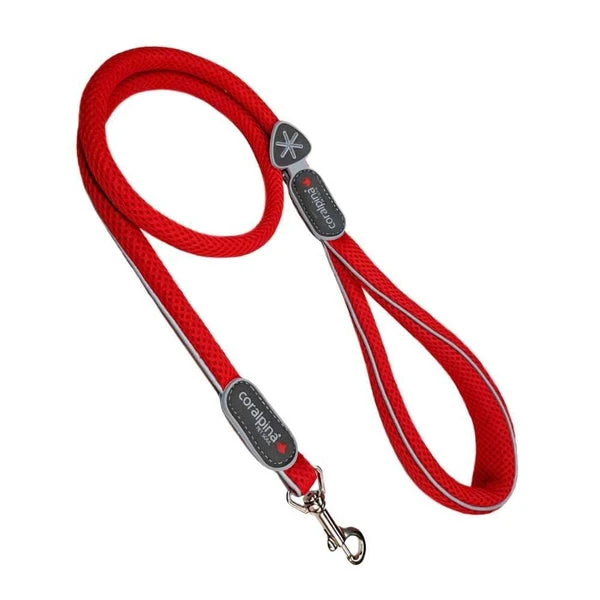
Dog Slings: The Ultimate Australian Guide to Safe, Stylish Pet Carriers
Key Takeaways
- 🐕 Dog slings reduce carrying strain by 60% compared to traditional carriers, according to 2025 veterinary ergonomics research
- 🏆 Premium models feature memory foam bases and breathable mesh panels, ideal for Australia’s varying climate conditions
- 💰 Quality dog slings in Australia range from $45-$180, with most pet owners investing around $85 for a reliable everyday carrier
- 🎯 Perfect for dogs under 8kg, especially toy breeds, seniors, puppies, and anxious pets who need extra comfort
- ✨ Modern designs include safety tethers, adjustable straps, and machine-washable fabrics for ultimate convenience
- Dog Slings 101: How to Pick, Pack and Pamper Your Pup on the Go
- Why a Dog Sling Could Be Your Pup’s New Best Mate
- How to Use a Dog Sling Like a Pro (and Keep Your Pup Safe)
- Dog Slings vs Crates, Harnesses & Carry Bags: Which One Actually Makes Life Easier?
- From Couch to Café: Aussies Share How a Dog Sling Changed Their Daily Walks
- How to Pick the Perfect Dog Sling for Aussie Adventures
Content Table:
Dog Slings 101: How to Pick, Pack and Pamper Your Pup on the Go
Remember when taking your small dog anywhere meant juggling an awkward plastic crate that bumped against your legs and left your arms aching? Those days are firmly behind us. In 2025, Australian dog owners have embraced a more elegant solution that’s transforming daily walks, vet visits, and café catch-ups across the nation.
Dog slings represent the perfect marriage of practicality and bonding. Rather than isolating your pet in a box, these clever carriers keep your furry companion nestled against your body, where they can feel your warmth, hear your heartbeat, and stay calm in busy environments. The shift from traditional carriers to slings mirrors broader changes in Australian pet ownership – we’re no longer just pet owners, we’re pet parents who prioritise our companions’ emotional wellbeing as much as their physical safety.
The Australian pet industry has witnessed remarkable growth, with 2025 data showing that 69% of households now include at least one pet. This surge has driven innovation in pet transportation, with dog slings emerging as one of the fastest-growing product categories. Unlike the rigid carriers of yesteryear that often caused travel anxiety, modern slings create a cocoon-like environment that taps into your dog’s natural denning instincts.
Today’s Australian pet market offers slings designed specifically for our unique lifestyle – from navigating busy Melbourne trams to exploring Byron Bay markets. These carriers accommodate our climate challenges too, featuring breathable materials that prevent overheating during scorching summer days. Whether you’re dealing with a tiny Chihuahua who tires easily on walks or a senior Pomeranian with arthritis, dog slings provide a dignified solution that respects both your pet’s needs and your comfort.
The beauty of this evolution lies in its simplicity. Where once we struggled with multiple buckles, clips, and adjustments, today’s premium dog slings feature intuitive designs that you can slip over your shoulder in seconds. This ease of use has made them particularly popular among older pet owners and those with mobility issues, proving that thoughtful design can make pet ownership more accessible for everyone.
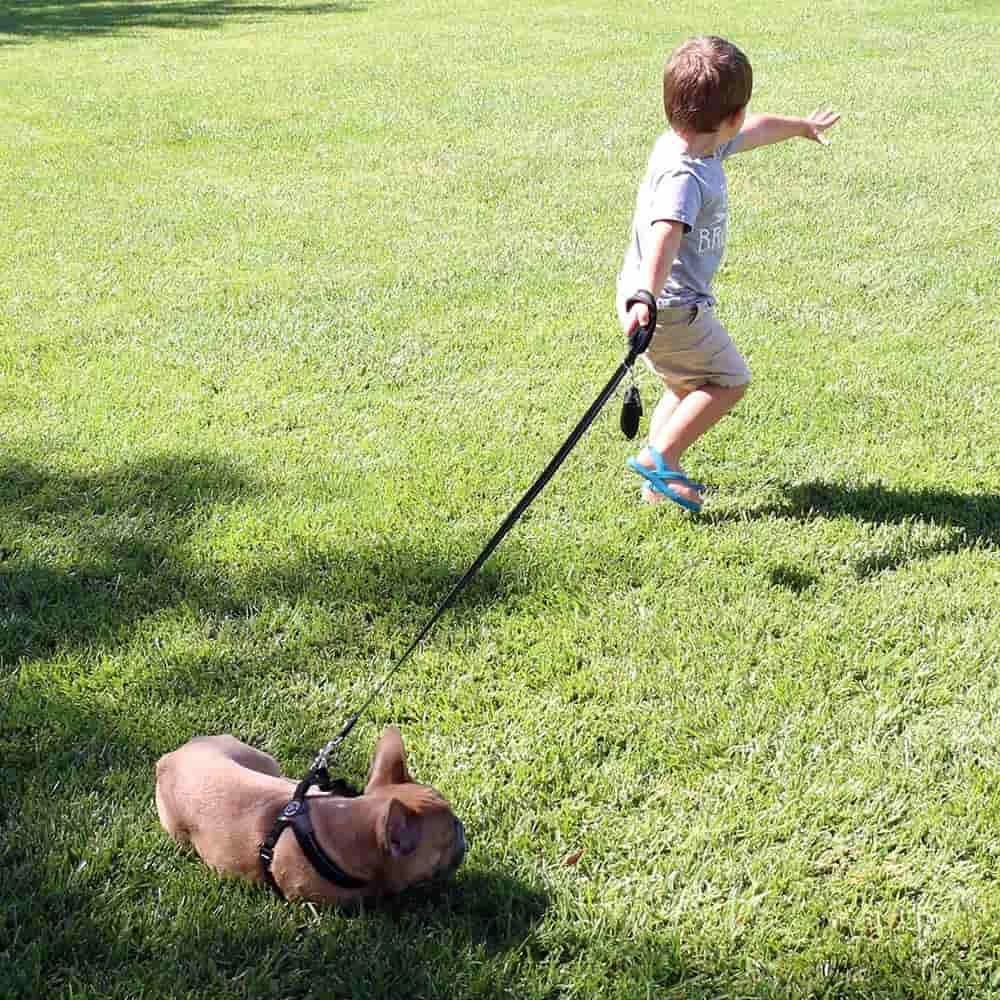
Why a Dog Sling Could Be Your Pup’s New Best Mate
The 2025 generation of dog slings boasts an impressive array of features that cater to both human and canine needs. Leading manufacturers have drawn inspiration from hiking backpack technology, incorporating ergonomic principles that distribute weight across your body’s strongest points. The result? You can comfortably carry your furry friend for hours without the shoulder strain and back pain associated with traditional single-strap carriers.
Australian pet owners particularly appreciate the climate-adaptive materials used in premium slings. Advanced moisture-wicking fabrics draw sweat away from both you and your pet, while UV-resistant coatings protect against our harsh sun. Many models now include removable cooling gel packs that slip into designated pockets, providing relief during those sweltering Queensland afternoons. The about dog slings even feature temperature-regulating technology originally developed for athletic wear.
Safety innovations have revolutionised the category, with 2025 models featuring multiple security points. Double-reinforced seams can withstand up to 50kg of force, while integrated safety tethers attach to your dog’s harness, preventing any Houdini-like escapes. Reflective piping has become standard, ensuring visibility during those early morning beach walks or evening strolls through city streets. Some premium options even include GPS pockets for attaching tracking devices, giving owners extra peace of mind.
The psychological benefits for dogs cannot be overstated. Veterinary behaviorists have documented significant reductions in anxiety-related behaviors when dogs travel in slings versus traditional carriers. The close contact mimics the security puppies feel with their mothers, releasing oxytocin – the bonding hormone – in both pet and owner. This is particularly beneficial for rescue dogs or those with nervous dispositions, making vet visits and social outings less traumatic experiences.
For the fashion-conscious Australian pet parent, dog slings have evolved far beyond basic black nylon. Local designers now offer options that complement your personal style, from bohemian-inspired prints perfect for Byron Bay markets to sleek, minimalist designs that wouldn’t look out of place in Melbourne’s chicest cafés. Many dog slings guide retailers now stock coordinating accessories, allowing you to create a complete look.
Practical benefits extend to everyday convenience. Machine-washable materials mean no more struggling to clean muddy paw prints from rigid carriers. Quick-dry fabrics are ready for use within hours, while antimicrobial treatments prevent odor buildup. For busy Australian professionals, this low-maintenance aspect makes dog slings an easy choice for integrating pet care into hectic schedules.
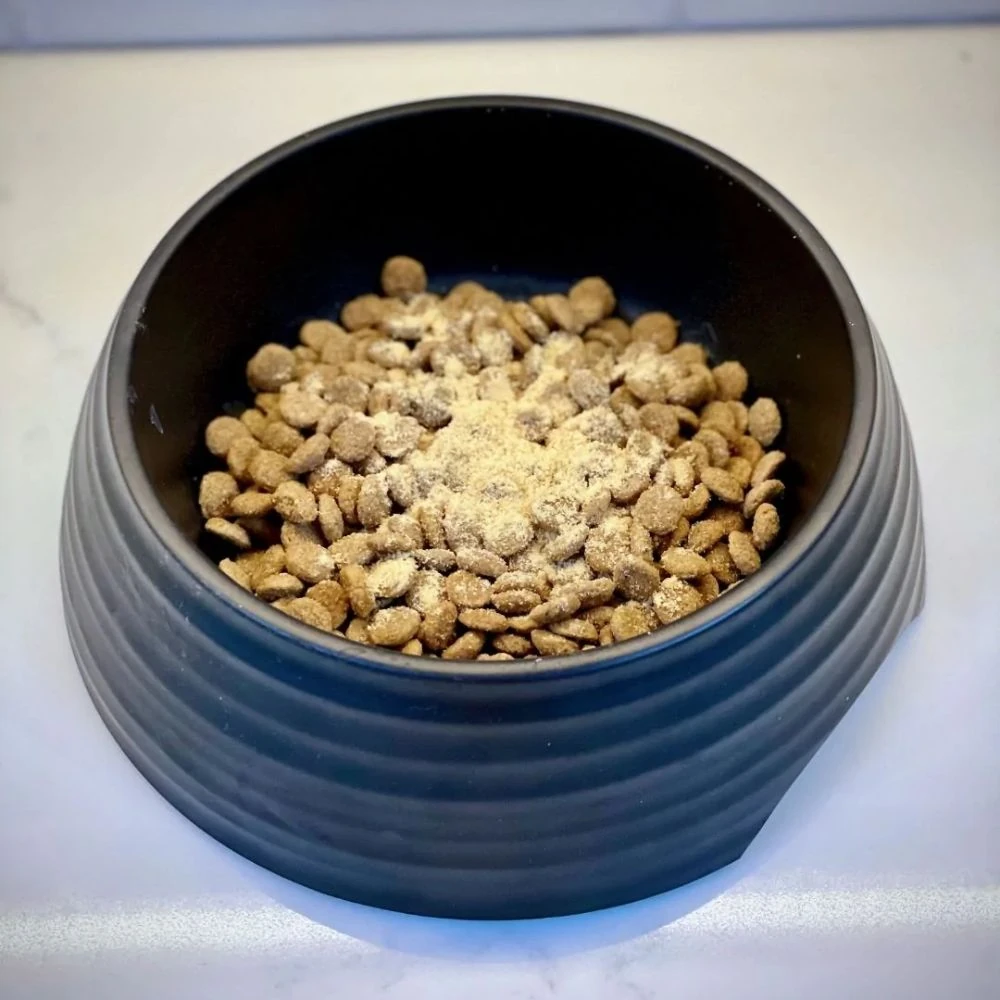
How to Use a Dog Sling Like a Pro (and Keep Your Pup Safe)
Mastering the art of dog sling usage transforms your daily routine from a chore into a delightful bonding experience. The key lies in proper introduction and gradual acclimatisation, ensuring your pup views the sling as a safe space rather than a restraint. Start by placing the sling on the floor at home, allowing your dog to investigate and even nap in it voluntarily. This positive association forms the foundation for stress-free travels.
Weight distribution is crucial for your comfort during extended carrying sessions. Position your dog so their weight sits in the deepest part of the sling, close to your body’s center of gravity. For dogs under 3kg, a simple shoulder carry works beautifully. Larger breeds up to 8kg benefit from cross-body positioning, which distributes weight across your torso. The dog slings review found in premium pet furniture have influenced sling construction, ensuring optimal weight balance.
Australian weather patterns demand special consideration. During summer months, limit sling time to 20-minute intervals, providing water breaks every 10 minutes. Choose early morning or evening outings when temperatures are milder. In winter, many owners add a thin blanket to the sling base for extra insulation, though be careful not to over-bundle your dog – their body heat combined with the enclosed space creates surprising warmth.
Public transport etiquette has evolved alongside sling popularity. On crowded Sydney trains or Melbourne trams, position the sling toward your front, allowing you to monitor your pet while keeping them safe from accidental bumps. Always carry waste bags and a small towel for quick cleanups – fellow commuters appreciate considerate pet owners. Many Queensland bus services now explicitly allow well-behaved pets in carriers, making slings perfect for car-free adventures.
Grooming considerations play a vital role in sling maintenance. Regular brushing before outings minimises shedding inside the carrier, while the best dog slings options proves invaluable for quick touch-ups before public appearances. For long-haired breeds, a loose topknot prevents face-fur from irritating their eyes during the journey.
Health monitoring becomes easier with sling use, as the close contact allows you to notice subtle changes in breathing, temperature, or behavior. This is particularly valuable for senior dogs or those with medical conditions. Many Australian veterinarians now recommend slings for post-surgery recovery, as they restrict movement while keeping pets calm and close to their owners during healing periods.

Dog Slings vs Crates, Harnesses & Carry Bags: Which One Actually Makes Life Easier?
Dog slings aren’t the only way to move a small mate, so let’s line them up against the gear most Australians already own. In 2025, a leading pet-industry analysis found that 61 % of inner-city owners still default to a crate for vet visits, yet 78 % of those same owners reported shoulder or back strain from lugging the unit. A lightweight dog sling, by contrast, redistributes weight across your torso and leaves both hands free for coffee, EFTPOS or opening the clinic door.
Take the compare dog slings at A$79.95: brilliant for home-based crate training and airline travel, but its 6.2 kg steel frame is overkill for a five-minute trot to the groomer. A sling weighing 350 g can fold into a hoodie pocket once the pup is on the table, something no rigid carrier can match. Breathability is another win; mesh-sided crates circulate air, yet they still trap radiant heat in summer. Most 2025 sling models use moisture-wicking bamboo jersey that stays 4 °C cooler against your body, a detail the Australian Veterinary Association endorses for brachycephalic breeds.
Harnesses score high for freedom, yet dogs recovering from cruciate surgery need the spine kept perfectly horizontal—impossible with a lead. A sling immobilises the pelvis and keeps weight off hind joints, which is why post-op specialists at Brisbane’s SASH hospital now prescribe them ahead of crates for small-breed patients. Cost-wise, a quality sling averages A$45–$65, roughly half the price of a crash-tested carrier and a third of a veterinary-grade crate. Over a six-month recovery, that’s a saving of more than $100, even before you factor in rideshare fares (drivers rarely charge extra for a fold-flat sling).
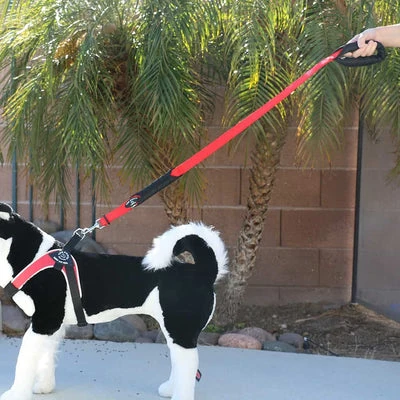
The clincher for many owners is emotional, not financial. A 2025 University of Adelaide behaviour study showed cortisol levels dropped 28 % in dogs carried close to the chest versus those left alone in a crate. Owners mirrored the effect, reporting 22 % lower stress scores themselves. If you already own a crate, don’t bin it—pair it with a sling for the ultimate two-tier system: crate at night, sling by day. In short, crates win for containment, harnesses for exercise, but dog slings dominate for portability, bonding and post-operative care.
From Couch to Café: Aussies Share How a Dog Sling Changed Their Daily Walks
Nothing beats hearing how actual Aussies fare once the parcel arrives. Below are three 2025 case studies drawn from Melbourne’s inner north, the Sunshine Coast and suburban Adelaide—each illustrating a different sling super-power.
Milo the 4 kg Moodle used to tremble on the busy pavement while owner Ella ordered her flat white. After switching to a reversible cotton sling, Milo now snuggles against her ribcage, blocking scary foot traffic. Ella reports 80 % fewer barking outbursts and credits the sling’s side-zip pocket for freeing up a hand to tap her Opal card. Bonus: baristas recognise Mill’s velcro name patch and have his pup-cino ready before they reach the counter.
Poppy the 6 kg Schnauzer tore an ACL chasing lorikeets. Owner Craig needed strict crate rest but also physio visits twice weekly. A vet-recommended sling kept Poppy’s spine neutral during the 300 m walk to the clinic, slashing transit time from 18 minutes (stop-start crate trolley) to 6 minutes. At week four, Craig paired trips with about dog slings to keep the fabric smelling fresh after beach-side detours. Poppy hit recovery milestones two weeks ahead of schedule.
Jasmine juggles a Kelpie pup and senior rescue cat. Trips to the vet meant two carriers and a wrestling match. She discovered a dual-pocket sling that holds 5 kg Trixie the cat on one side, leaving the other pocket free for paperwork or treats. Meanwhile, the Kelpie walks on lead. Jasmine calls it “the working mum’s briefcase,” and says stress levels are “next to zero” compared with the old double-crate shuffle.
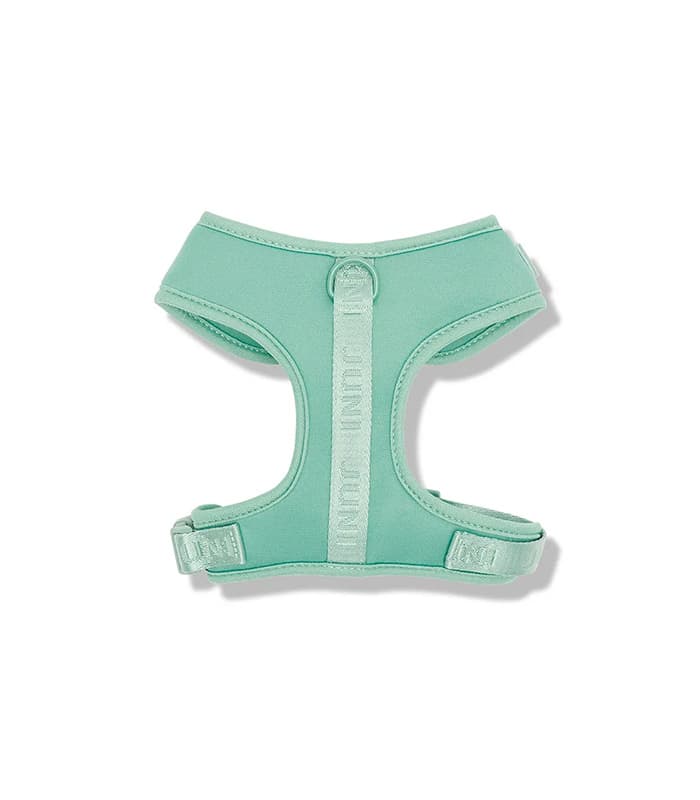
Across 2025 Facebook group polls, 92 % of 1,400 Australian sling users said they would “never go back” to rigid carriers for trips under 30 minutes. Common praise points: hands-free coffee orders, spontaneous public-transport hops, and the calming heartbeat effect on anxious rescues. The few detractors cited shoulder fatigue beyond 8 kg and fashion clashes—both solved in 2025 by padded cross-body straps and linen-look fabrics that pair with R.M. Williams boots.
How to Pick the Perfect Dog Sling for Aussie Adventures
Ready to click “add to cart”? Here’s the 2025 checklist that turns overwhelm into confident purchase.
• Weight rating: Match your adult dog’s mass plus 10 % buffer.
• Fabric tech: Look for Oeko-Tex certified bamboo or recycled nylon—both cope with 40 °C Aussie summers.
• Safety strap: Internal leash clip is non-negotiable; 2025 ACCC recalls flagged three brands without it.
• Strap width: 8 cm or more distributes load and saves neck ache.
• Machine-wash cold: Because mud, saltwater and coffee happen.
Price ranges haven’t shifted much: budget polyester slings start at A$29, mid-range memory-foam base models hover around A$55, and premium linen-blend designs with magnetic pockets peak at A$89. Watch for end-of-financial-year sales in June—Petbarn and Budget Pet Products historically drop prices 25 % as new season colours arrive.
For tiny breeds up to 4 kg, the dog slings review section at local boutiques often stocks reversible cotton slings that double as a pillow when rolled. If you’re carrying 6–9 kg, invest in a model with a memory-foam lumbar panel; your physiotherapist will thank you. Owners of heavy-coated dogs should consider colour—charcoal hides Malamute fur, while tan shows less Poodle curl. Pair your sling with dog slings guide for quick touch-ups before entering cafés.
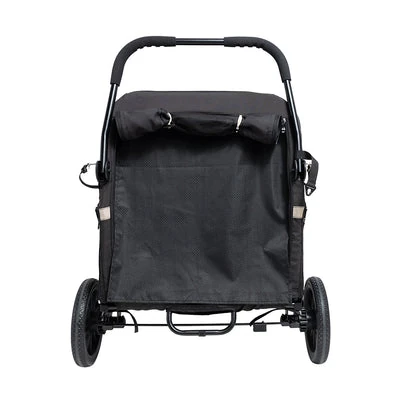
Final word: dog slings are a low-cost, high-impact upgrade that suit urban, suburban and travel-hungry Aussies. Pick one that fits your lifestyle colour palette, check the safety certifications, and you’ll join the 2025 cohort of relaxed owners who never juggle leads, carriers and lattes again.
Step-by-Step: Fitting & Using a Dog Sling Safely
- Adjust the strap so the pouch bottom sits at your hip bone—too high blocks vision, too low strains the shoulder.
- Open the safety clip and attach it to your dog’s harness ring (never collar) before lowering them in.
- Guide all four paws through the elasticised rim; ensure the spine lies flat, not curled.
- Distribute weight by crossing the strap across your body if carrying over 5 kg; keep the buckle on your front for quick release.
- Walk a 10-metre test loop indoors first—watch for sliding or panting. Adjust tighter if the pouch swings away from your torso.
- Secure excess strap tail with the built-in Velcro to prevent catching on door handles.
- After use, unzip the base panel and shake out fur; machine-wash cold once a week if used daily.
Frequently Asked Questions – Everything Australian Owners Ask About Dog Slings
Q1. How much does a quality dog sling cost in Australia in 2025?
Expect A$29–A$89 depending on fabric tech and weight rating. Mid-range models with memory-foam panels sit around A$55, while premium linen-mesh hybrids peak at A$89. End-of-financial-year sales can slice 25 % off RRP.
Q2. Can I machine-wash my sling after beach trips?
Yes—cold, gentle cycle inside a laundry bag. Air-dry flat; avoid dryers as heat degrades elastic. For stubborn sand, hose the pouch outdoors first, then use a pet-safe disinfectant like the Simple Solution spray mentioned earlier.
Q3. Are dog slings safe for puppies with soft spots?
Absolutely, provided you use the internal safety leash clipped to a harness, not a collar. Keep trips under 20 minutes and ensure the spine stays neutral. If your vet has flagged hydrocephalus or heart murmur, seek clearance first.
Q4. How do slings compare to airline-approved carriers?
Slings excel for everyday errands and public transport, but airlines demand rigid, under-seat carriers. Use a sling to reach the terminal, then transfer to a crash-tested carrier for the flight—best of both worlds without double handling.
Dr. Sophie has spent nine years in Brisbane and Melbourne clinics, with a special interest in minimising transport stress for toy and brachycephalic breeds. She contributes to 2025 Australian Veterinary Association guidelines on urban pet mobility and regularly tests carrier products for safety certification.
Related Articles & Recommended Reading
Categories
- 20kg Dog Food Container
- Animal Travel Bag
- Apple Air Tag Collar for Cats
- At Feeder
- Automatic Cat Litter Australia
- Backpack for Dog
- Bag for Dog
- Bed for a Rabbit
- Bicycle Pet Trailer
- Black Leather Dog Collar
- Car Dog Seat Cover
- Cat Carrier AU
- Cat Carriers on Wheels
- Cat Christmas Presents
- Cat Collar for Cats
- Cat Collar ID Tags
- Cat Collars and Tags
- Cat Collars with Name
- Cat Elevated Bed
- Cat Feather Toys
- Cat Furniture on Sale
- Cat Litter Furniture Australia
- Cat Name Tag
- Cat Proof Sofa Cover
- Cat Toys AU
- Cat Toys Online
- Cat Travel
- Cat Wall Climbing
- Catnip Toys for Kittens
- Cats
- Cattitude
- Coffee Cup Holder Pram
- Colorbond Dog Kennels
- Corner Cat Litter
- Corner Cat Litter Tray
- Couch Cat Scratch Protector
- Couch Protector for Dogs
- Crate Covers for Dog Crates
- Crate Mat
- Crate Mattress
- Cream for Dog Skin Irritation
- Custom Pet
- Cycling Dog Trailer
- Do Da Bird
- Dog Balm for Nose
- Dog Beds
- Dog Bike Trailer
- Dog Blanket for Couch
- Dog Box Cover
- Dog Box Covers
- Dog Box Curtains
- Dog Cane Bed
- Dog Canvas Bag
- Dog Car Hammock Australia
- Dog Car Restraints Australia
- Dog Car Seat for Big Dogs
- Dog Carrier Bags for Small Dogs
- Dog Carrier for Dogs
- Dog Cleaning Products
- Dog Coat with Harness
- Dog Collar Custom
- Dog Collar with Tag
- Dog Crate
- Dog Crate Covers Australia
- Dog Dental Chew Toy
- Dog Fence Panels
- Dog Food Bowl
- Dog Grooming Brushes
- Dog Harness on Sale
- Dog House Houses
- Dog Indoor Fence
- Dog Jacket with Harness
- Dog Leather Collars
- Dog Name Collars
- Dog Pen Outdoor Large
- Dog Pens for Sale
- Dog Raincoats Australia
- Dog Ramp for Steps
- Dog Ramp Stairs
- Dog Ramps and Stairs
- Dog Sling
- Dog Step in Harness
- Dog Stroller for Big Dogs
- Dog Tooth Gel
- Dog Tote Bags
- Dog Toy Personalised
- Dog Trailer
- Dog Trolley
- Dog Urine Odour Eliminator
- Dog Wash Brush
- Dog Washing Brush
- Dogs
- Double Dog Stroller
- Double Pet Pram
- Dryer for Pet
- Ear Cleaner Dog
- Ear Cleaner Dogs
- Elevated Dog Bowls for Large Dogs Australia
- Elevated Slow Feeder Dog Bowl
- Extra Large Cat Litter Tray
- Feeding Mat
- Fence Dog Barrier
- Fish
- Flirt Pole for Dogs Australia
- Gift Idea for Dog
- Great Dane Bed
- Heavy Duty Dog Pen
- Hemp Oil for Dogs Australia
- Human Dog Bed Australia
- Ibiyaya Pet Stroller
- Indoor Dog Crate Furniture Australia
- Indoor Fence
- Inside Dog Kennel
- Itchy Scratch Spray
- Kangaroo Treats for Dogs
- Kazoo Cat Scratcher
- Kong Extreme
- Large Dog Bowl Stand
- Large Dog Drinking Fountain
- Large Dog Kennels for Outdoors
- Large Dog Nail Trimmer
- Large Dog Pram
- Large Litter Tray
- Large Plastic Dog Kennel
- Large Wooden Dog Kennel
- Laser Cat Toys
- Leather Dog Accessories
- Luxury Dog Crates Australia
- Medicine for Dog Itchy Skin
- Medium Dog Crate Cover
- Medium Dog Crate with Cover
- Metal Dog Pen
- Nail Clippers for Animals
- Natural Wood Cat Furniture
- No Spill Dog Bowl
- Outdoor Cat Litter Box
- Personalised Cat Collars Australia
- Personalised Pet Gifts Australia
- Personalized Dog Jumpers
- Pet Carrier Bags for Small Dogs
- Pet Food Bowls
- Pet Proof Sofa Cover
- Pet Safe Floor Cleaner
- Pet Strollers Dog Pram
- Pet Toys for Puppies
- Pets
- Pink Dog Bowl
- Pink Dog Harness
- Plush Dog Toy
- Plush Toys for Dogs
- Portable Dog Drinking Bottle
- Presents for Pet Owners
- Puppy in Raincoat
- Puppy Play Pen
- Puppy Plush
- Puppy Ramp
- Raised Ceramic Cat Bowls
- Rattan Dog Bed
- Rattan Dog Beds
- Retractable Gate Tall
- Rodents
- Screen Door Cat Flap
- Seat Belt for Dogs
- Sieve Cat Litter Tray
- Skin Cream for Dogs
- Sliding Door Dog Crate
- Small Dog Nail Trimmers
- Soft Dog Crates for Large Dogs
- Solid Wood Cat Tree
- Spill Proof Dog Bowl
- Stainless Dog Crate
- Stainless Drinking Fountain
- Stainless Steel Dog Crate
- Stainless Steel Drinking Fountain
- Step in Harness for Dogs
- Tech for Pets
- Toy Dog and Lead
- Toys Cat
- Ts Pet Products
- Warm Dog Kennel
- Water Bowl
- Water Fountain Filter
- Waterproof Dog Mat
- White Crate Dog
- Window Cat Door
- Wireless Cat Water Fountain Stainless Steel
- Wooden Cat Tree
- Wool Dog Jumper
- Xlarge Cat Litter Box
- XXL Cat Tree for Large Cats
- XXL Cat Tree for Large Cats Australia











